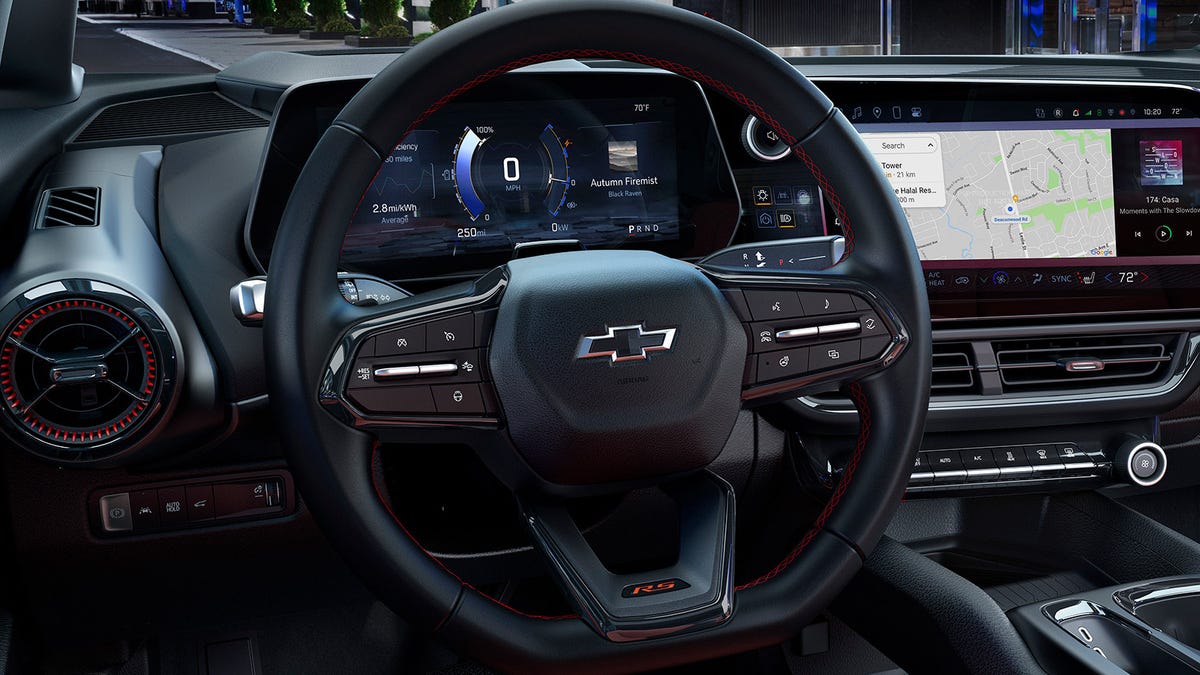What Would You Do With GM's Idea for a Steering Wheel That Changes Size, Shape and Texture?

Now, imagine if the Equinox EV’s steering wheel could become smaller.Image: General Motors
Companies file patents for ideas all the time, many of which never see the light of day. In lots of cases, these dead-end proposals rely on technologies and concepts that aren’t fully fleshed out yet, or simply don’t exist. Still, the benefits are usually obvious — you don’t need the advantages of a self-healing windshield explained to you, for example.
Sometimes, though, a company stakes its claim to an idea that leaves you wondering not only how, but why. Like one of General Motors’ latest patents, for a steering wheel that can grow and shrink and even change its texture to suit the driver’s preference.
This patent, unearthed last week by GM Authority, was filed in December of 2020 and granted earlier this month. The rationale expressed in the summary is that an adaptive steering wheel can best suit a range of unique driving scenarios. GM has envisioned a system to realize this, using liquid- or gas-filled bladders. From the rather dry, technical explanation in the patent application:
It is an object of the present disclosure to provide a steering wheel for a vehicle comprising: i) a hub adapted to be mounted on a steering column of a vehicle; ii) a rim coupled to the hub; iii) a rim material covering at least a part of the rim; iv) at least one bladder disposed between the rim and the rim material; v) a fluid pump configured to inflate and to deflate the at least one bladder; and vi) a control module coupled to at least one vehicle sensor and configured to control the operation of the fluid pump.
The application also raises the idea of a system that can adapt to a “driver state or driver style,” possibly measured through sensors that can detect “hand size, hand location, grip strength, galvanic skin response, heart rate, and body temperature.”
Certainly, there are situations where some people might prefer a smaller or larger rim. For spirited driving on back roads, the former might come in handy. And if it could grow for the boring highway part of the journey, that’d be neat. The malleability of the wheel’s surface is the most interesting part to me, personally, because I have a love-hate relationship with some upholsteries or finishes, like Alcantara. Sure — it looks great and, initially, feels nice to the touch, but the material makes my palms clammy.
G/O Media may get a commission
Save 10%
Apollo Wearable Wellness Wristband
Use it day or night
As most smartwatches and similar wearables simply track your health and wellness, the Apollo seeks to actively improve it. This non-invasive tool sends silent, soothing vibrations meant to improve focus, benefit sleep, and help you feel relaxed and in control.
But is any of this really necessary? Would it really make driving all that easier or more enjoyable? I realize I’m preaching to the choir here, and our little enthusiast community is pre-disposed to spurn tech for tech’s sake — the sort of electronic overreach that struggles to justify itself, that seems to only exist to give corporations new, expensive, failure-prone things to sell. On the other hand, I imagine there could be more specific accessibility-related cases where someone might benefit from a steering wheel that changes its size, shape and texture to accommodate an individual’s needs.
I’m curious what you all think. If anything, I’m surprised ideas like these are gestating somewhere in GM’s headquarters, at a time when automakers are regularly fantasizing about the death of the steering wheel and, generally, physical modes of control altogether.
Now if somebody could just design a great steering wheel that doesn’t whiff out of the window while I’m driving, that would be a life-saver. It’s a good idea, and I stand by it.



